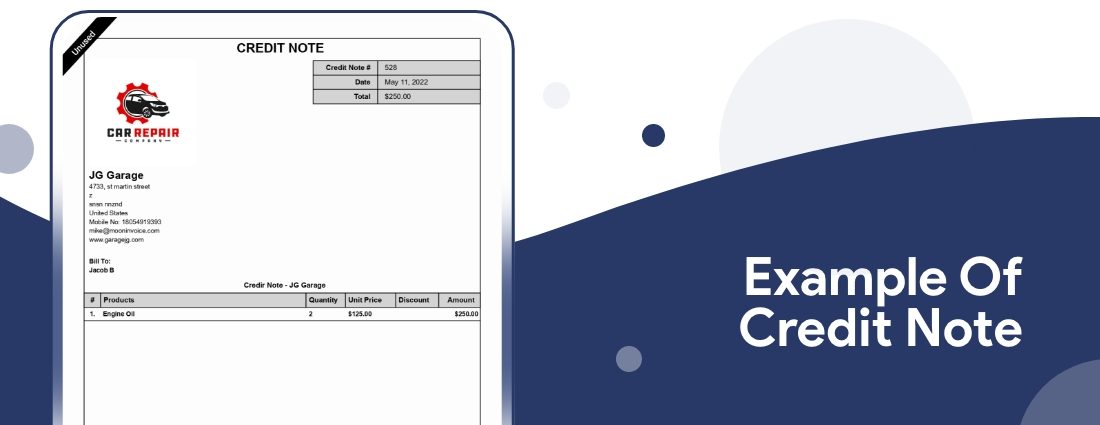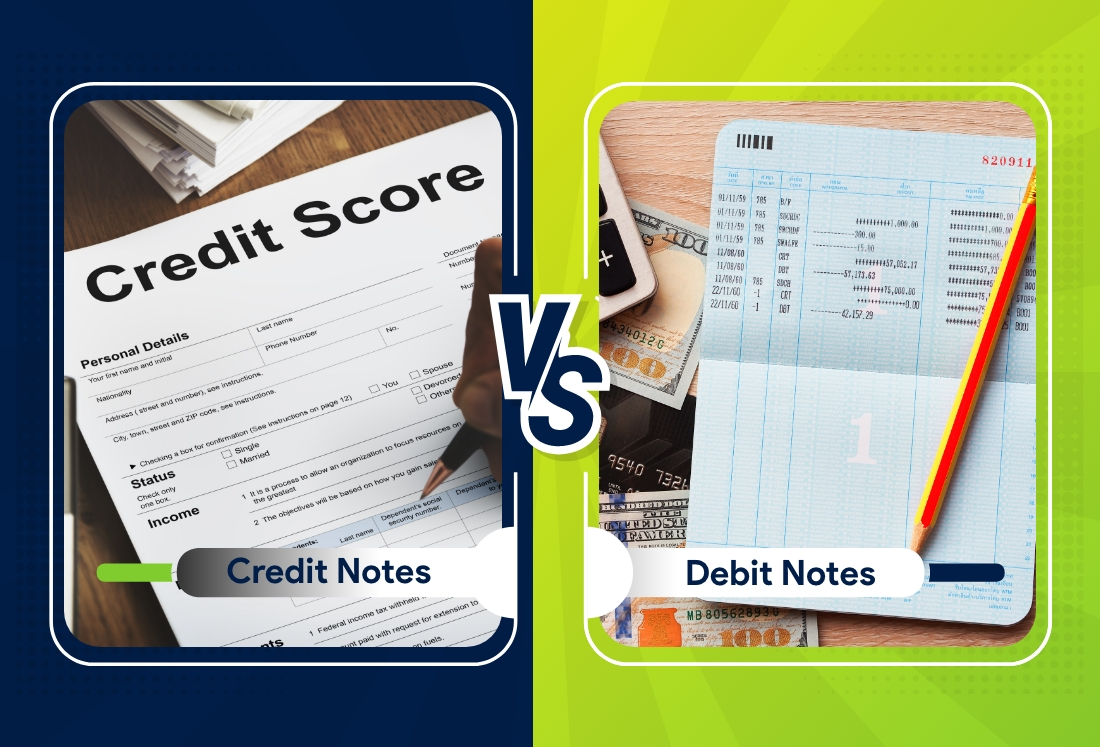Some invoices may include minor errors. Rectify an overcharge by sending a credit note to your clientele after the fact.
Credit notes are an essential part of any business accounting process (as it is a commercial document). Still, they might be challenging to grasp because of their infrequent usage. Here, we’ll break down the ins and outs so small business owners can utilize them effectively whenever the need arises.
In this guide, we’ll go through the specifics of credit notes and examples of credit notes, from what information should be included to some sample credit notes you may use. We’ll also review how a credit note differs from a debit note and why it’s used in different situations.
The next time you need to issue credit note, you’ll be prepared thanks to your newfound knowledge on how to include credit notes into your regular invoicing process using invoicing software.
What is a Credit Note?
A credit note is a written communication between two parties indicating that one party has credited the other’s account with the issuing party’s financial records. If the taxable value of the goods provided by the supplier decreases after he provides the tax invoice, for instance, the supplier may send a credit memo with the appropriate information.
It is not quite an explicit refund policy but functions as a substitute for a refund whereby the buyer may acquire the things later without paying for them. In response to the buyer’s debit notes, the seller provides the credit memo to lessen the buyer’s liabilities.
How Does a Credit Note Work?
A credit note should be sent in tandem with an existing invoice and show a negative balance. For instance, if you wish to provide your customer a total refund on a transaction of one thousand rupees, the amount that should appear on the credit memo is one thousand rupees less.
Alternately, suppose you overcharged a customer by Rs.1000. In that case, the credit memo you provide them should include a minus sign next to the Rs.1000 amount.
The ability to maintain order and consistency throughout your financial matters is one of the many benefits of being able to issue credit notes. If your initial invoice were numbered 1, for instance, the credit note that followed it would be numbered 2, and the next invoice that came after that would be numbered 3.
What to Include on a Credit Note?
Credit memos are similar to invoices, so learning to write either shouldn’t be too difficult. They are identical in content.
All credit notes for financial conduct should include:
- Customer Information
- Your Business Information
- Original invoice reference number
- Heading “Credit Note.”
- Date
- Credit note number
- Item description, prices, original sales agreement, and quantities
- The total amount credited
VAT / GST must be included individually on the credit note if it was included on the original invoice(original invoice included vat).
Example of a Credit Note
When to Issue a Credit Note?
A credit note will be given if an invoice has to be changed. This might also occur if the customer makes changes to the order after the invoice has been created. It is sometimes necessary to revise or reprint an invoice; in such cases, a credit note is quite helpful. A credit note is to be reissued with the amount of the invoice already paid in case of damaged goods, incorrect products, or returned products due to any other reason.
If a credit note is given to be applied to a future invoice, it must reference the original invoice. Credited invoices must not be removed under any circumstances. This is the primary justification for using a credit note. Contrary to popular belief, they are not the same as cashback. It means the customer may utilize the credit for future transactions. Only the vendor may issue a credit balance note.
Credit notes are widely used in business for a variety of purposes and it is considered commercial document issued. Credit notes, similar to invoices, are used to reverse or reduce the amount owed on a purchase. This is especially helpful in jurisdictions were erasing, canceling, or deleting invoices is illegal. These may be removed without breaking any rules, electronic money regulations, or other stringent laws if necessary in case of invoice error.
How Long Does a Credit Note Last?
Alongside the associated invoices, a credit note must be kept for at least six years to comply with regulatory requirements. You will need to maintain financial information for legal and accounting reasons, even though it is crucial to keep GDPR in mind and erase a past client’s data if they want you to delete them.
As the owner of a small company, it is your obligation to ensure that these conditions of use are presented clearly and understandably on all of your invoices and credit notes using advanced or traditional accounting practices.
It is in everyone’s best interest to lay out these payment terms and conditions immediately so that customers know what to anticipate. When you have your expectations established in advance, it also makes it simpler to deal with challenging circumstances.
How to Make a Credit Note Online?
You may use invoice software like Moon Invoice to create an electronic credit note. Its many valuable features may help you streamline your company’s bookkeeping operations. For example, with Moon Invoice’s credit note functionality, your company can quickly generate a credit note in an electronic format with just a few clicks.
Making quick credit notes for clients and customers is a breeze using Moon Invoice. This article will walk you through the steps legally required to issue a credit note using our web-based billing system.
Access the Moon Invoice platform through any of the following:
- To access Credit Notes, choose it from the Features/Categories menu.
- To add an acknowledgment, choose the plus symbol (+).
- Customer name, automated credit note number, currency, date, address, products or product information, job and rate data, invoice amount, and notes should all be filled in.
- Select “Save” to save the changes.
Credit Notes Vs. Credit Memo
A credit note is a kind of written communication between a seller and a buyer stating the terms of a credit being issued to the buyer’s account. One other name for these documents is “credit memos,” which you may hear more often.
Credit Notes Vs. Debit Notes: What’s the Difference?
It would help if you understood credit notes and how they function at this point. But there’s another crucial document to learn about that may sometimes factor into the invoicing process: the debit note.
Debit notes, often called debit memos, are written requests from customers to businesses for the return of money.
Reasons for sending a debit note might include the consumer receiving damaged or defective merchandise or desiring to cancel a transaction in other circumstances. The buyer formally asks the seller for a debit note or credit note.
| Debit Note | Credit Note |
|---|---|
| According to the contract, the buyer’s financial responsibility decreases as a result of the return of purchased items. | It is confirmation that the opposite party has received a debit note. |
| The buyer issues the debit note. | The seller issues the credit note. |
| The buyer issues a debit note if they are overcharged or have defective products. | The seller issues a credit Note in exchange for the debit note. |
| Debit notes lower the receivables of the sellers. | A credit note lowers the payables of the buyer. |
A seller would record a reduction in revenue attributable to Sales Returns in the debit column of a credit note’s double-entry accounting book. In contrast, the corresponding credit would be recorded. When a customer makes a purchase, they credit Accounts Payable and the debtor’s Accounts Receivable. Liabilities and assets are reduced by the amount owed to creditors. Reduce costs by making a return purchase or on-purchase cancellation.
From both the buyer’s and seller’s perspectives, the following double-entry journal entries need to be made in the general accounting ledger.
How Can a Credit Note be Issued with the Minimum Amount of Hassle?
By using invoicing software like Moon Invoice, you can easily keep track of the administrative aspects of your money.
With Moon Invoice, you can easily create and deliver estimates, invoices, and credit memos to your clients in digital files whenever and wherever you choose. In addition, invoice status, credit note correlation, and automatic payment reminders may all be monitored in real-time.
To save time in the future, you may utilize accounting software to design customized invoice and credit note templates.
Conclusion
Making manual adjustments to accounts after issuing credit notes is time-consuming if you lack a specialized accounting staff.
Even if you want to, you probably do not wish to annoy them with credit notes. However, when done manually, there is a higher chance of making accounting mistakes, which may cost your company time and money.
Almost all modern organizations use accounting software to streamline their accounting processes. For example, the time it takes to write out credit notes and enter them into the books might be cut in half with the help of accounting software.
In this manner, your staff will be freed from the burden of the mundane, routine chores so they can concentrate on the job that matters.













